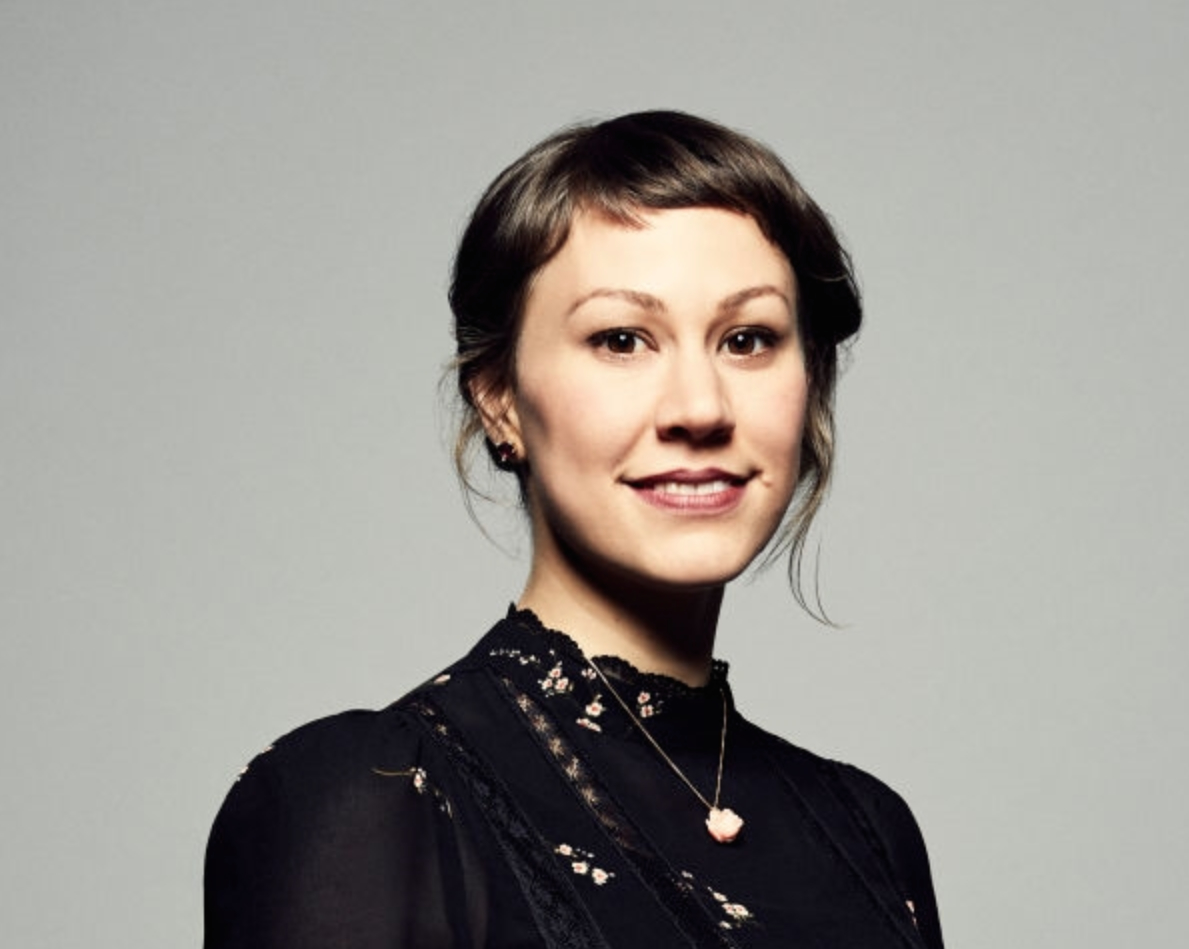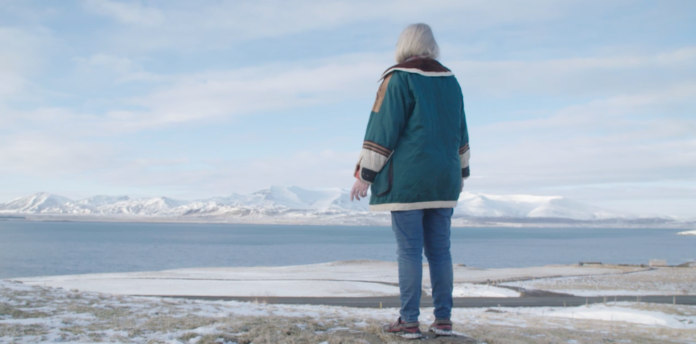There are fairy doors at the bases of trees in neighborhoods throughout the East Bay. Berkeley filmmaker Sara Dosa sees them when she walks along Sonoma Avenue on the north side of her city. They make her smile, but she can also relate them to another place, Iceland, and Ragnhildur “Ragga” Jónsdóttir, a grandmother who is a kind of elf whisperer in Dosa’s latest documentary, The Seer and the Unseen.
One month before Iceland’s 2008 financial crash, Sara Dosa completed her Master’s program in Cultural Anthropology and International Development Economics at the London School Economics. She spent her life fascinated by the anthropology of economic systems and thought academia was in her future. But 20 years ago, Dosa saw Life and Debt, Stephanie Black‘s documentary about the impact of globalization on Jamaica, and what she saw impressed her as Black made plain the human cost of neoliberal economic policy.
“That film did something to me where I understood the power of documentary storytelling as fundamentally different, but as a powerful vehicle that could exist alongside economic analysis,” Dosa says during a recent phone chat.
An internship with filmmakers Bonni Cohen, Jon Shenk, and Richard Berge at San Francisco’s Actual Films further excited Dosa. Soon, she was ready to embark on her own cinematic career, debuting with Last Season, a documentary about a Vietnam vet and Cambodian refugee who bond as hunters of a lucrative mushroom that earned her a Film Independent Spirit Truer Than Fiction Award nomination.
While the economic meltdown of 2008 was felt worldwide, it was the situation in Iceland that captured Dosa’s imagination. The power of belief she sees as the heart of economic systems combined with photos she saw of the country’s wild, volcanic landscape commanded her attention as she was finishing Last Season and starting to think about next projects.
“Ragga will say the elves called me,” Dosa says. “The landscape seems so surreal and otherworldly, just captivatingly beautiful. And I just thought, ‘Oh, this is the place I’d like to explore.’ And then I started researching headlines coming out of Iceland. And I came across, ‘Elf lobby shuts down construction of road.'”
That article led her to Jónsdóttir, who Dosa discovered had translated a book written by a 900-year-old elf. She bought the book and a pen-pal friendship began between the two women, the first step on the filmmaker’s journey to The Seer and the Unseen. At the heart of the documentary is the tension between those who believe economic solutions trump other all considerations to those who believe in considerations like the environment and, yes, the well-being of elves.

Jónsdóttir is the film’s beating heart as she joins with environmentalists to try to stop the construction of a road through a lava field. Activists are livid over the destruction of fragile nature, while Jónsdóttir fights to save an elf cathedral that could be bulldozed out of existence. One of the things that stands out in the documentary is the matter-of-fact way Jónsdóttir talks about the elves and the absolute respect given her even by her staunchest opponents.
“I just think that she’s so she’s so warm and so smart,” Dosa says. “She has this brilliant way of communicating to other people. She takes her belief and her work incredibly seriously, but she doesn’t take herself very seriously. She has that really playful humor about herself, which I feel instantly disarms people. Unconventional people who have a relationship with supernatural forces can often put people on edge, but she knows how to put people at ease and finds ways to connect to others.”
One of the things that surprised Dosa most as she shot her film was her own reaction to being in this surreal place that Jónsdóttir and others believe are home to the elves, invisible to our human eyes.
“I’ve got to say I experienced things in these places where Ragga said elves were,” she says. “I can’t describe it in any other language than the presence of the supernatural, it was unlike any experience I’d ever felt before. And that really caught me off guard, it was a feeling I hadn’t a reference for, but it was also a welcome one that really did connect me with this majestic feeling of nature power. I guess life force really is what I felt.”
Dosa hopes that, as people catch up with The Seer and the Unseen streaming or through one of her appearances at Bay Area theaters that they will absorb a little of what she felt as she got to know Jónsdóttir and see the world through her eyes.
“I hope people will take in some sense of wonder and mystery,” Dosa says. “I hope the film will invite a sense of questioning about what might exist in their world that they don’t actually see. Perhaps, more importantly, I hope people will know that you can see a rock and understand that there’s a life force there. The boulder that is the elf church looks like any other boulder. The lava field is in a municipal park outside of Reykjavik. You wouldn’t know this is a sacred place. I want people to see life everywhere and see that land isn’t just a resource ripe for extraction or development.”
Sara Dosa and producer Shane Boris will take part in Q&As at The Seer and the Unseen screenings on Sunday, Sept. 12, 4:15 P.M., Smith Rafael Film Center, San Rafael; Monday, Sept. 13, 6:30 P.M., Roxie Theater, San Francisco; and Thursday, Sept. 16, 7 P.M., Elmwood Theatre, Berkeley. The film is also streaming on Apple TV and Altavod.





